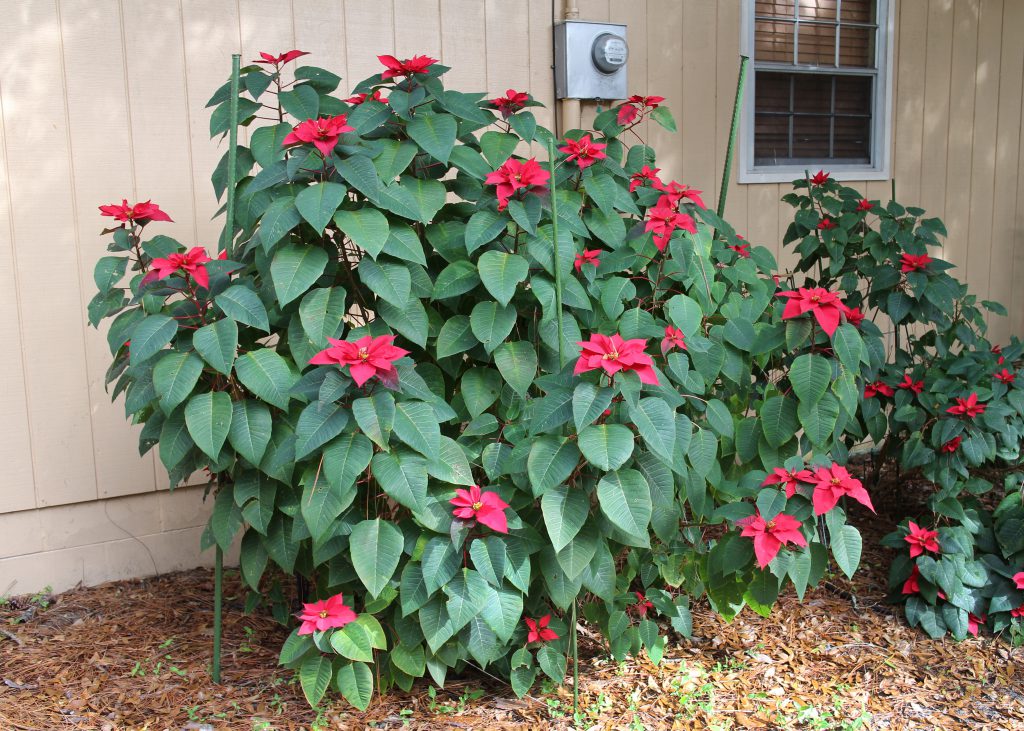A Short History
The poinsettia (Euphorbia pulcherrima) is a plant synonymous with the holiday season. Growing in deciduous forests along the Pacific coasts of southern Mexico it becomes a woody shrub reaching 10-15 feet tall. In 1825 the ambassador to Mexico Joel Poinsett was taken by the red blooms and brought it home to the United States. He propagated and gifted the plant to friends and a few public gardens. Before long the nursery industry took notice and the plant was on its way to becoming the potted plants we see in stores. Today, an extensive breeding program has created a multitude of colors and leaf patterns available to consumers for the holiday season.

The Plant
Poinsettia is a member of Euphorbiaceae commonly referred to as the Spurge family. The primary feature of this family is a milky sap or latex produced in the stem tissue. Some may be allergic to the latex, but to most it is at worst a mild irritant. This irritation conjoins a reputation of toxicity which may give some pause toward purchasing one. While a very mild toxicity does exist, you would need to consume very large amounts of the leaves to experience negative effects. That said, it is always best to dissuade consumption by pets and children with this and any other house plants. The flowers of this plant are somewhat unremarkable and appear in the middle of several red leaf structures. These leaves are actually bracts and are protective structures for the flower. As a tropical plant, frosts and freezes have a detrimental consequence for this plant, but in areas where there is little or no risk of cold it may be used in your landscape after the holidays. In these scenarios, it will grow much as in its native habitat into a shrub.

Care
When kept inside, keep the temperature around 65F at night and 80F during the day. They need full sun and water only when the soil is dry. It is good practice to remove any water left in pot saucers as this plant performs poorly with wet feet. All-purpose fertilizers should used except while this plant is in bloom. When blooming the plant does not require fertilization. Placed outdoors in a protect area once freeze risk has passed. Keep in mind that the bracts are photosensitive. Around October, theses plants will need 14 hours of complete darkness daily to turn their customary red by Christmas. Keep them covered and completely blacked out as even porch lights will delay color change.
Poinsettias are a beautiful plant and certainly worth your efforts this holiday season. With some knowledge and a little effort, you may extend their life in our environment through much of the year. For more information on poinsettias, see this Ask IFAS document, or contact your local extension agent for additional information on this and any topic regarding your gardens and more.
- It’s Time for Sweet Potatoes - May 22, 2025
- Ecological Benefit and Upkeep of Florida Lawns - April 21, 2025
- What are Fertilizers? - March 6, 2025
